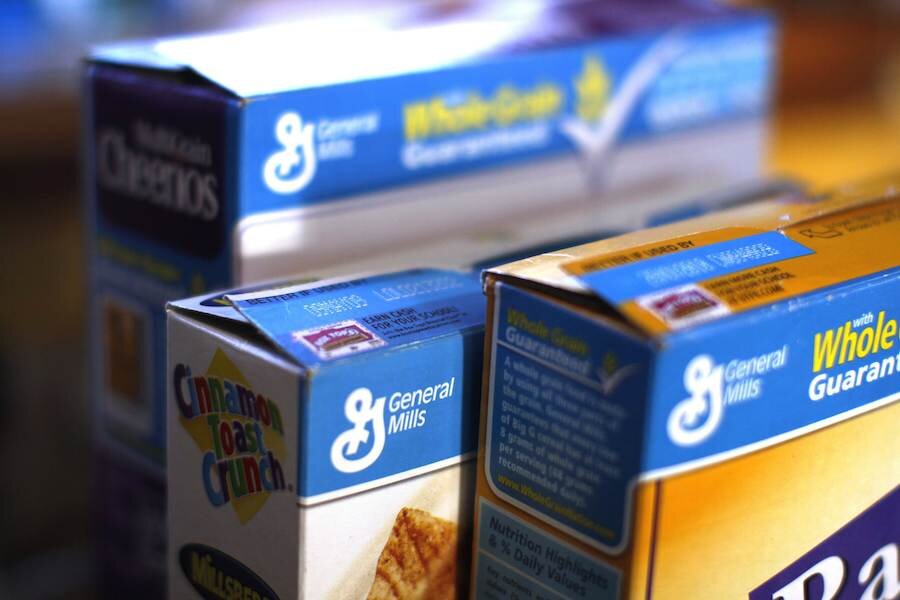General Mills nixes artificial ingredients, and Americans nix cereal
Loading...
If you’re one of the shrinking number of Americans who still eats cereal for breakfast, your morning bowl of Trix or Lucky Charms is about to get a makeover.
General Mills, the leading producer of cereal in the United States, announced Monday that it will be removing artificial colors and flavoring from its cereal products over the next two to three years.
The Minneapolis-based food processor says it hopes to have artificial ingredients out of 75 percent of its cereal lineup by January of next year, and gone from 90 percent by the end of 2016.
The most immediate, noticeable recipe changes will affect Reese’s Puffs and Trix. The latter, a Technicolor sugary cereal, will no longer include bright green and blue pieces, because pigments that could replicate those colors without altering the flavor aren’t easy to come by non-synthetically.
“An artificial source is where the ingredient is derived from something other than a plant, spice or another substance found in nature,” a release on the General Mills website reads. “For cereals like Trix, we will be using fruit and vegetable juice and spice extracts for color. In Reese’s Puffs, we will use flavors like natural vanilla.”
Cereals like Lucky Charms and other brands containing marshmallows could take longer to reformulate, the company said.
Declarations like this have become a matter of routine in recent months as companies from Nestle to Kraft ramp up the arms race to lure more ingredient-conscious consumers. From some, particularly those that tread in what most would consider “junk food,” they can look more like identity crises and public relations plays than genuine calls to reform. Taco Bell and Pizza Hut, sister companies at Yum! Brands, made their own ingredient pledges last month, but such missives can be hard to take seriously coming from chains also selling decidedly unnatural fare like hot dog-crusted pizza and Doritos-shelled tacos.
General Mills faces a similar problem: Sugary, carb-loaded cereals dyed with turmeric and vegetable juice are still sugary, carb-loaded cereals.
"These kid-oriented cereals are still extremely processed, have virtually no nutritional value and are fortified with vitamins because the real nutrients have been stripped in processing," public health lawyer Michele Simon told the Washington Post. "If they really wanted to be healthier, they should stop bombarding children with messages to eat candy in a box."
General Mills has been ahead of the curve in evolving with its customers’ tastes, however. Cheerios, by far the most popular cereal brand in the country by sales, became GMO-free in January 2014. Late last year, the General Mills also introduced an “Ancient Grains” Cheerios variety containing grains like quinoa and spelt that have a better nutritional reputation these days than typical oats and wheat. Beginning in July, several types of Cheerios will also be gluten-free, General Mills announced in February. It has also reduced the amount of sugar in many of its cereals targeting children.
Despite such efforts, cereal’s share of the US breakfast market is shrinking, and it has been for about two decades. Since peaking in the mid-1990s, cereal sales have fallen from a combined 13.9 billion in 2000 to an estimated 9.7 billion in 2015, according to market research firm Euromonitor.
Speaking to the New York Times last year, investment analyst Nicholas Fereday characterized cereal’s decline as “a death by a thousand cuts.” In addition to a lingering aversion to carbohydrates borne from the Atkins diet craze and the more recent rise of gluten-free trend, cereal is being squeezed out on both ends of the breakfast convenience spectrum. On the one end, more convenient options like breakfast bars, yogurt, and fast food sandwiches are growing in popularity. At the same time, those who do choose to eat at home are choosing more time-intensive options like eggs, toast, and hot oatmeal, all of which saw sales increases in 2014, according to Bloomberg.
General Mills has started to adjust to that new reality. It bought a controlling stake in yogurt company Yoplait in 2010 and has boosted options in its breakfast bar offerings, including gluten-free and protein-added varieties of its Nature Valley granola bars. In late 2014, it acquired Annie’s, a popular line of organic snacks and processed foods. If current trends continue, the food processors' future may lie in those efforts, not with cereal – even naturally flavored cereal.






